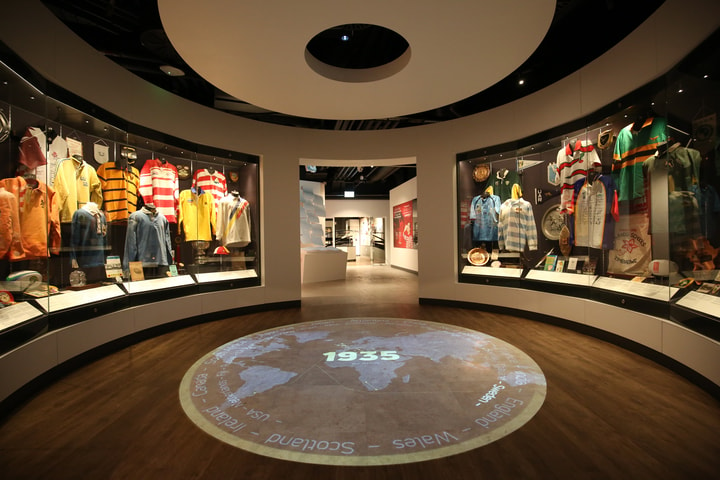For many years, the South Terrace at Twickenham was truly a place for rugby purists. Being exposed to the elements, in a way that the other three 'covered' sides were not, meant that tickets were generally a bit cheaper and the atmosphere a bit livelier.

From The Vaults
Twickenham's First Commentary Box
The rugby faithful that trooped in on 15th January 1927 to see England take on Wales, would have been greeted by a curious sight. Perched precariously atop a rudimentary scaffold right at the back of the open terrace was a flat wooden platform, to which a short ladder led up to what appeared to be a small garden shed. Inside, clutching a pair of binoculars, sat former Harlequin captain Teddy Wakelam. HQ was about to bear witness to Britain's first live team-sport radio broadcast.

The fans were in for an entertaining afternoon. Wales, despite losing a player to injury in the first half, at a time when replacements were not permitted, came within a whisker of chalking up their first victory at Twickenham. Fortunately for the home support, a last-minute ankle tap by full back Monkey Sellar prevented a winning score by Welsh centre John Roberts and English captain Len Corbett's first half converted try was, instead, enough for an 11-9 English victory.
Amidst all of this excitement, Wakelam had been carefully describing the events on the field to those who listened at home on the wireless. As Monkey made his crucial intervention, he may have glanced up at the one piece of advice that was apparently stuck to the inside wall of his box, 'DON'T SWEAR'.

Back to Square One
Live sport quickly became a regular and popular radio broadcast and a system was devised, with the help of the Radio Times magazine, to help the listeners picture the action. Tucked inside the back of the magazine was a picture a sports field divided into squares. Commentators like Wakelam would make reference to the grid during the game, so that the listener would know which area of the field the ball was in play. The sigh of frustration as expressed by the commentator and listener when the ball returned 'back to square one' is believed to be the origin of the phrase that remains in use to this day.
Wakelam would go on to become a veteran of live sports broadcasting, commentating at rugby, cricket and boxing matches on both radio and television. He also commentated on tennis and is reported to have accidentally set fire to his notes at Wimbledon in the late 1930s, expertly carrying on his vocal delivery as though nothing had happened.




